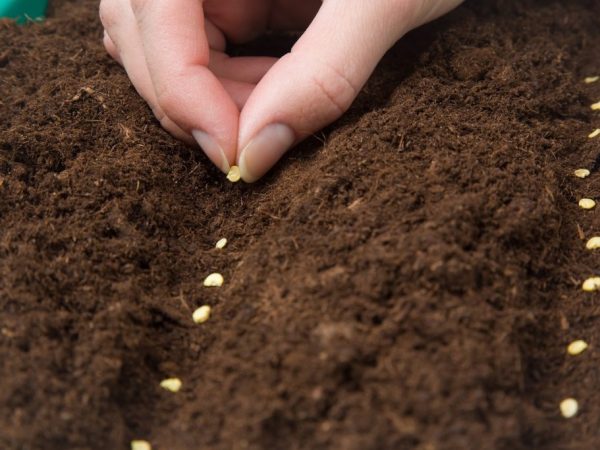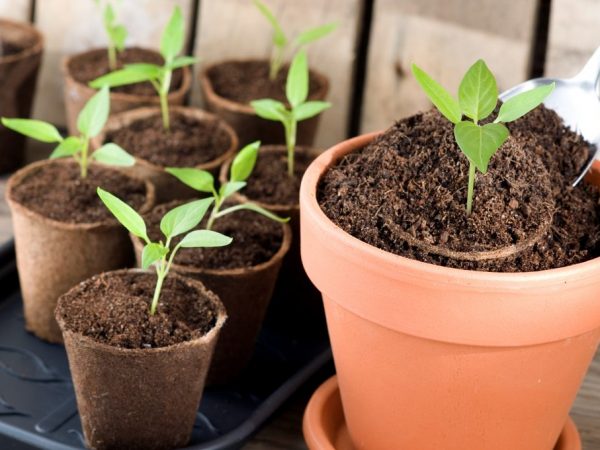Growing pepper on the balcony
Do-it-yourself vegetables are always tastier and healthier than purchased ones. People who do not have personal plots at their disposal can try to cultivate pepper on the balcony.

Growing pepper on the balcony
Conditions for growing pepper
The cultivation of any culture begins with the creation of favorable conditions.
First, choose a container for planting plants. Use wooden boxes or flower pots. With each transplant, the capacity is increased. A prerequisite for choosing containers for growing is the presence of holes on the bottom. This is necessary for the outflow of excess fluid.
How to choose a seat
It is necessary to grow such a vegetable on the south or east side. If the plant is exposed to direct sunlight, it is better to put it in the shade. If the sun is not enough for the bushes, lamps can be installed in the loggia: they will extend the daylight hours for the seedlings. It should last about 10-12 hours.
Temperature regime
If you grow salad peppers on the balcony, you should take care of the stability of the temperature regime. The temperature on the windowsill should be within 25 ° C. Pepper is protected from drafts.
Watering
Watering is carried out as the upper layer of the soil dries up. The water should be settled, with a temperature of 30 ° C. In the summer, the plants are sprayed. A damp cloth is placed on the battery: this does not allow the seedling to overheat. It will not work to grow hot peppers on the balcony at low temperatures: the seedlings will develop poorly and will soon die.
Both sweet and hot peppers can be grown on the balcony, while the bushes must be grown separately, otherwise the vegetables will pollinate each other.
Seed selection
Not only favorable conditions, but also the correct choice of variety for growing pepper on the balcony plays an important role. It is worth choosing undersized and compact varieties. According to the ripening time, they are divided into:
- early maturing;
- mid-season;
- medium early.
You can grow hot peppers on the balcony from purchased seeds or from the last harvest. There are many varieties of sweet and hot vegetables on the market. Seed selection comes down to growing conditions and personal preference.
They choose varieties that reach a height of 30-50 cm. Such plants are suitable for all sizes of windows, unpretentious in care.
Seed preparation

Seeds must be prepared before planting.
The seeds are being prepared for planting. The process includes disinfection and germination.
For disinfection, a solution of potassium permanganate is used. The seeds are soaked for 20 minutes and then washed with cold water. This avoids infection and disease.
Biostimulants
For better growth, seeds are soaked in growth biostimulants:
- 2 drops of epin are diluted in 100 ml of water;
- 1 drop of zircon - in 300 ml of water.
The seeds are in such a solution for a day, then they are placed in gauze or cloth. The planting material is stored in a dark, warm place (its temperature is 22-25 ° C). The gauze is periodically moistened, it is not allowed to dry out. In this way, the seeds are grown until they hatch.
How to sow seeds
Sowing seeds begins in the first decade of February. The seeding process looks like this step by step:
- Preparing the container and soil for planting. You can buy special soil for growing vegetables at the store. A mixture of humus, sand and sod land is suitable. The soil is treated with boiling water before planting.
- Sowing seeds. It is produced to a depth of 6-10 cm, the planting material is placed at a distance of 2 cm from each other. If planted thicker, the seedlings will turn out to be elongated.
- Watering with warm water, covering with a film.
- Placement in a warm place.
The first shoots appear a week after planting the seeds.
After the formation of 3 leaves, the seedlings are fed. For this purpose, 30 g of potassium salt, 50 g of urea and 125 g of superphosphate are diluted into 10 liters of water.
After that, the plantings are watered with plain water. Watering is carried out every 3 days.
Hot peppers are sown in the same way as sweet peppers.
Seedling picking
A pick is carried out as soon as 5 leaves appear on the seedlings. The picking process itself consists in transplanting a seedling from a small container to a large one. During this process, larger and better developed seedlings are selected.
A pot or transplant box is required. The soil is watered abundantly, a hole is made in the center. The seedling is carefully taken out of the pot along with a lump of earth. It is not recommended to hold by the root so that there is no damage. Better to hold onto the upper leaves.

When the fifth leaf appears, the plants can be transplanted
The seedlings are placed in the center and covered with earth so that the leaves are 2 cm above the surface. The soil is compacted around the planted plant and watered with warm water, after which the seedlings are placed on the windowsill. The room should be warm, there should be no sudden changes in temperature.
Planting seedlings in the ground
Hot or any other pepper on the balcony is grown until 12 leaves appear on it. Plants already have a strong green stem and reach a length of 25 cm.
If the balcony is glazed, you can plant hot peppers in the first decade of May, and if it is open, in the second. If the temperature outside is below 15 ° C, you must wait for the warmth.
Before transplanting, the soil is fertilized. For 1 sq. m, 40 g of potash and phosphorus fertilizers and 30 g of nitrogen fertilizers are applied. Compost or humus is also used. It is not recommended to use fresh manure, as the leaves may fall off.
If the pepper is undersized, the seedlings are seated at a distance of 15 cm, the middle ones are better to be seated 25 cm apart, and the large varieties - 35 cm.
Care advice
It is impossible to grow peppers on the balcony without daily maintenance. Monitoring its development and the condition of the leaves helps prevent the development of diseases.
The condition of the leaves indicates a lack of certain micronutrients:
- an insufficient amount of potassium nitrate gives dried at the edges, twisted leaves;
- the lack of ammonium nitrate is expressed in the formation of small dull gray leaves;
- lack of phosphorus will lead to the formation of purple leaves;
- the absence of magnesium gives the crown a marbled color.
Potassium chloride cannot be used to feed pepper: its composition is harmful to the root system of the vegetable.
Plants can be damaged by spider mites. It can be easily detected by the formation of cobwebs between the leaves. For prevention, seedlings are treated with karbofos or keltan.
For the development of strong shoots, the lower leaves are removed. Dried leaves and sprouts without fruits are subject to removal.
To increase the yield, the seedling is pinched. In this case, the roots of the seedlings absorb all the nutrients, then the microelements go to the fruit, and not to the growth of the seedling.
Conclusion
Growing pepper is very simple: you need to plant seeds in early February, properly care for the seedlings, pick plants in time and add the necessary trace elements. It is important to monitor the climatic conditions on the windowsill and protect the plants from drafts and low temperatures.


